#mycena
Text
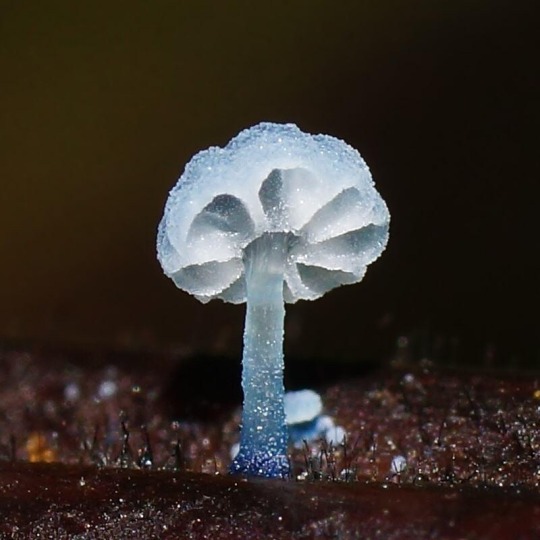
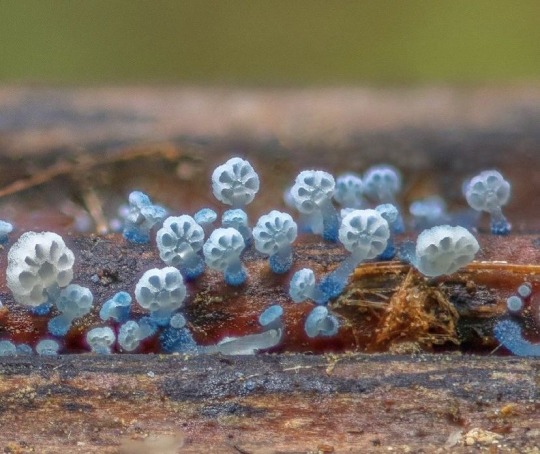
Mycena lazulina
(Tiny blue lights) 🌌
#fungi#mushrooms#nature#plants#mycology#mycena#aesthetic#nature aesthetic#mushroom aesthetic#plant aesthetic#cottagecore
38 notes
·
View notes
Text
Okay. This is a pretty big deal in the world of mycology. Historically fungi have been divided up into either parasites that siphon resources from plants, mutualists that cooperate with them, or saprotrophs that break down decaying organic matter (plant and otherwise.) The genus in question, Mycena, has traditionally been made of saprotrophic species feeding on decaying wood.
However, what scientists are observing is Mycena fungi displaying primitive mutualistic behaviors, specifically providing living plants with nitrogen and getting carbon in return from a living partner, or getting to chow down on the plant's remains once deceased. This shows a significant level of adaptability that hasn't been observed in fungi beforehand, though given how much we don't know about fungi there's a good possibility this isn't an unprecedented event.
It doesn't surprise me one bit that we're seeing this in Mycena. These fungi are especially opportunistic; in fact, that mushroom growing out of a frog's skin that we saw a while back was also a Mycena species. Perhaps we need to add bonnet mushrooms to raccoons, dandelions, and other hardy generalists as symbols of scrappy survival in spite of environmental pressures.
#Mycena#bonnet mushrooms#mushrooms#mushroom#fungi#fungus#mycelium#mycology#botany#biology#nature#science#scicomm#evolution#environment#ecology#mutualism#mycorrhizal fungi
634 notes
·
View notes
Text
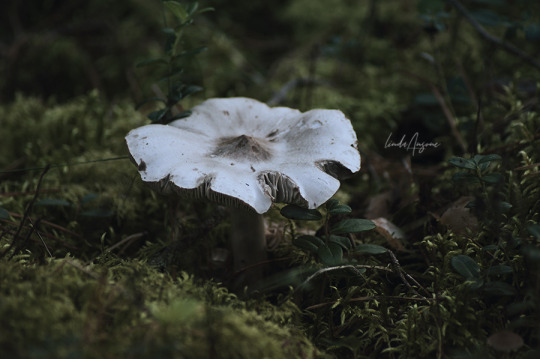
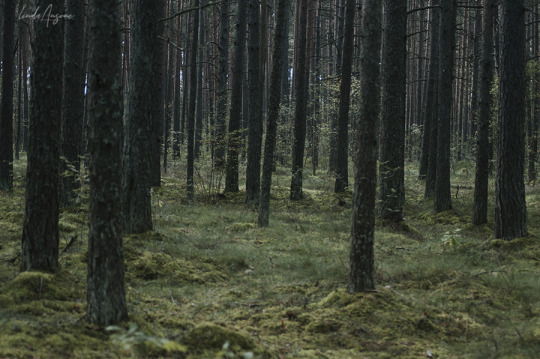
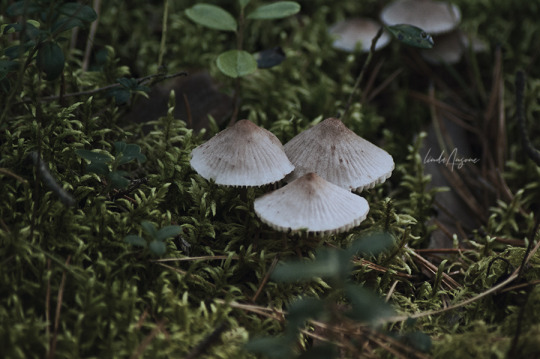


#woods#forest#forestcore#moss#mushrooms#fungi#forest floor#tricholoma#mycena#pine trees#latvia#nature#naturecore#original photographers#photographers on tumblr#nature photography
834 notes
·
View notes
Text

#funguary#mycena#mushroom#pixel art#aseprite#pixel artist#pixels#8bit#16bit#animation#pixel art animation#funguary2024#mushroom art
501 notes
·
View notes
Photo
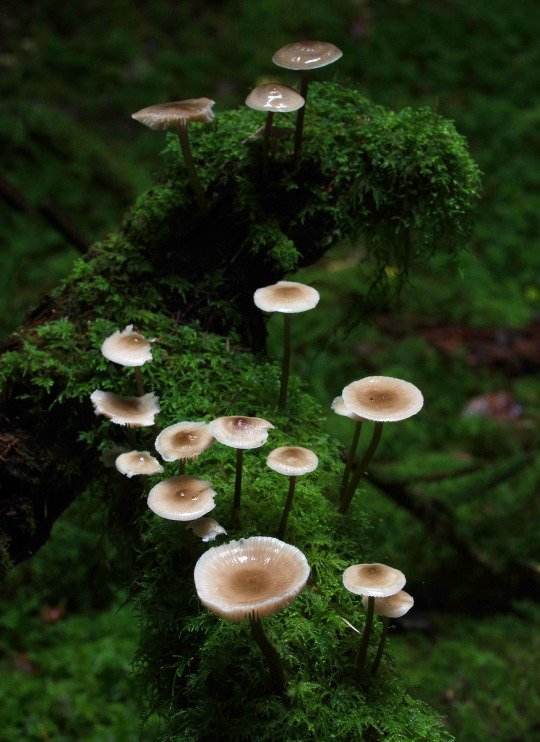
A decorous cluster of bonnet caps - Mycena galericulata - in a sequestered glade. <3
3K notes
·
View notes
Text

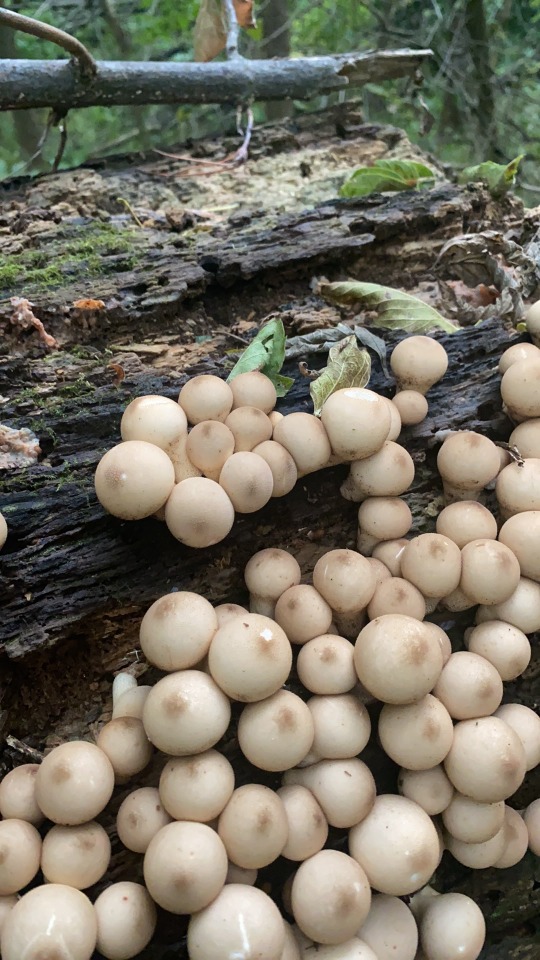
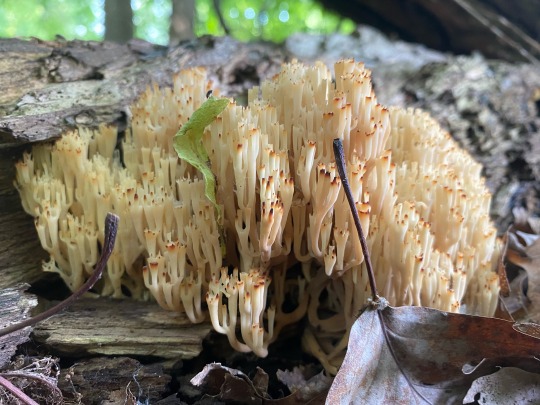


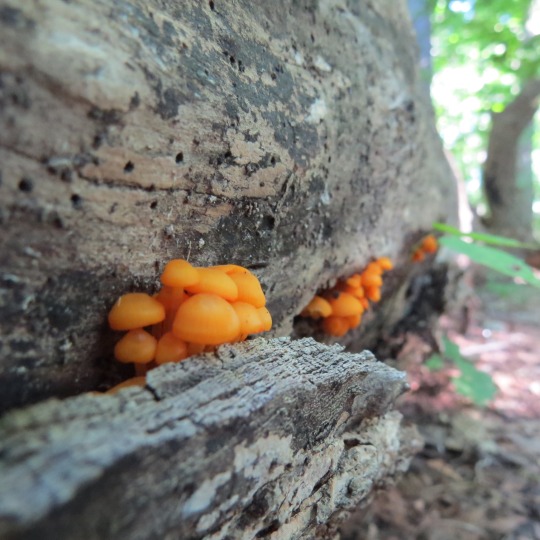
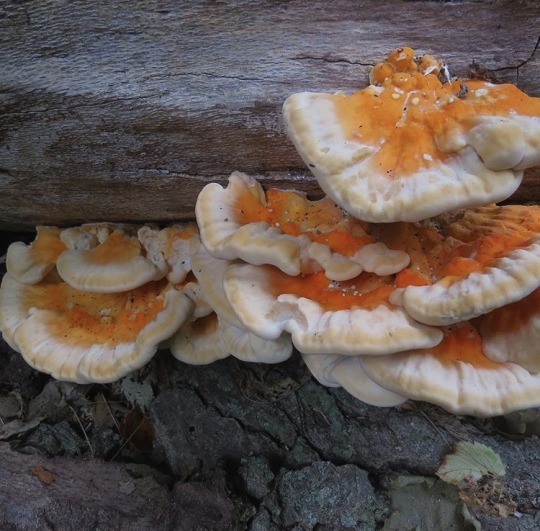

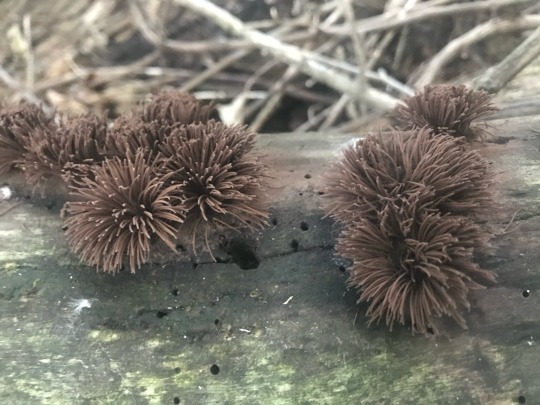

A collection of mushrooms ive found in Wisconsin, USA 🍄
#mushrooms#chicken of the woods#mycena#slime mold#angel caps#beech oysters#elf ears#coral fungus#puffballs
380 notes
·
View notes
Text
Biologists have long known mushrooms of the genus Mycena, commonly known as bonnet mushrooms, as fungi that live off of dead trees and plants. New research from the University of Copenhagen demonstrates that bonnets can also find their ways into young, healthy trees and plants, where they try to cooperate. In doing so, they have made an evolutionary leap which challenges our understanding of the ecological roles of fungi.
Fungal spores float through the air. Thin strands of their mycelia creep along surfaces. They seek out defenseless hosts to wrap themselves around in webs of fungal growth. Their victims can then be used to satisfy their own need to devour and disperse.
That fungi have begun to invade the living is a horrific thought for anyone who ever thought that fungi only dined upon the dead. Or, at least for those who stream The Last of Us, a post-apocalyptic series in which humans battle relentless fungal-infected zombies.
Fortunately, reality is rarely so dramatic. But after Danish mycologists targeted local Mycena, known as bonnet mushrooms, it turned out that certain similarities emerged nevertheless.
New research from the University of Copenhagen's Department of Biology suggests that this genus of fungi, which has traditionally been considered saprotrophic—i.e., a decomposer of nonliving organic matter—is in the midst of an evolutionary leap. The research is published in the journal Environmental Microbiology.
"Using DNA studies, we found that Mycena fungi are consistently found in the roots of living plant hosts. This suggests that bonnets are in the process of an evolutionary development, from uniquely being decomposers of nonliving plant material to being invaders of living plants, under favorable conditions," explains Christoffer Bugge Harder, the study's lead author.
Continue Reading.
422 notes
·
View notes
Text
FOTD #134 : mycena indigotica!
mycena indigotica (no common name) is a newly-discovered saprotrophic fungus in the family mycenaceae :-) it is currently only known to occur in northern taiwan, where it was first found.
the big question : can i bite it??
so far, the edibility is unknown.


m. indigotica description :
"basidiomata gregarious, not luminescent. pileus 1.5-3.5 mm diam, at first semiglobose, then convex to flattened, non-striate, pale blue… to blue… when young, gradually with black tints with age, totally black when old or in dried specimens, slightly pruinose when young, glabrous with age, context white, margin entire, crenulate. hymenophore consisting of 70-120 pores, pores circular, usually oval near stipe, concolourous with surface of pileus, 8-12 pores per mm. stipe 2e4 x 0.5e1 mm, blue… to dark blue… gradually with black tints with age, pruinose when young, glabrous with age, cylindrical, central, basally bulbous."
[images : source & source]
[fungus description : source]
#• fungus of the day !! •#[mycena indigotica]#134#||#mushrooms#mushroom#earth#fungus#nature#cottagecore#foraging#mycology#forestcore#fungi#fotd#blue mushrooms#mycena#mycena indigotica#fungus of the day
412 notes
·
View notes
Text

@feefal ‘s Funguary day 1: mycena subcyanocephala
224 notes
·
View notes
Text
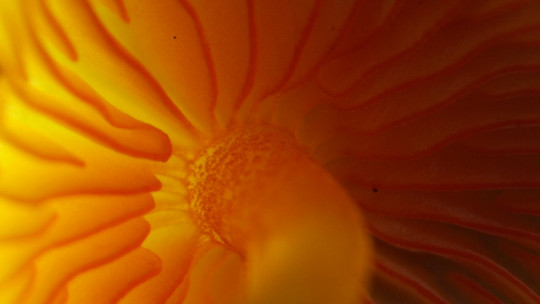
Imagine you're a little bug sitting under a Mycena leaiana mushroom, sun filtering through the orange cap onto you
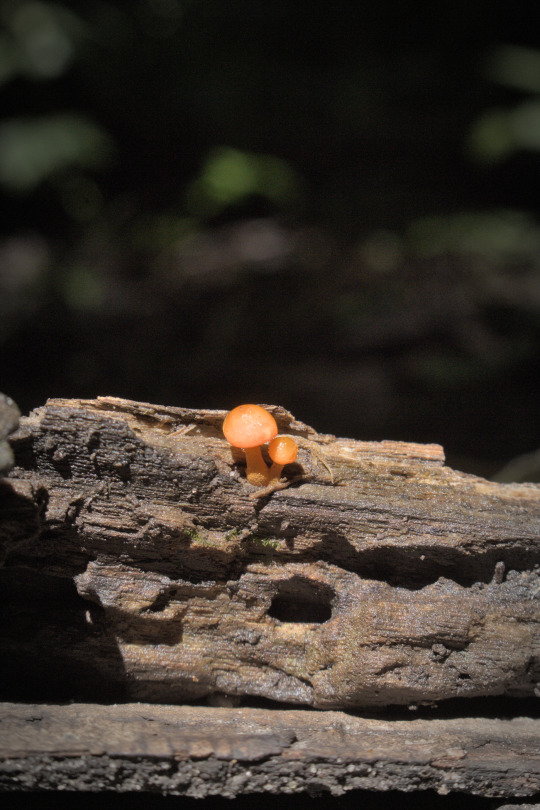
533 notes
·
View notes
Text
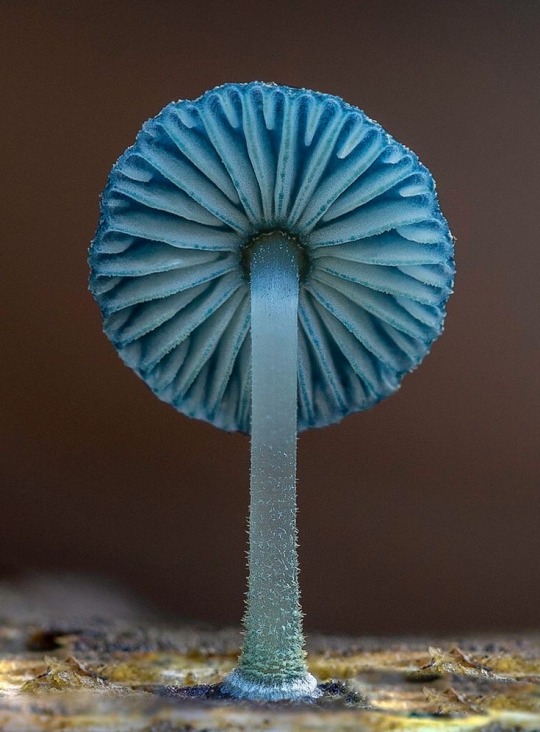

Mycena Interrupta (pixie’s parasol mushroom) 🧚🏻
2K notes
·
View notes
Text
THIS IS SO COOL! So animals can get fungal infections, as can plants and even other fungi. We've seen fungi like Cordyceps produce fruiting bodies on insect hosts postmortem. But this is the first known observation of a fruiting body on a live host! And the frog apparently seemed to be in good health otherwise.
It's likely a situation with an opportunistic spore of Mycena landing in a wound or other small vulnerability on the frog's skin, and since amphibians have to stay wet, the fungus had plenty of water. I'm not sure what it's been consuming since Mycena normally is a decomposer of dead plant tissue; maybe dead skin cells and bacteria?
Before people start leaping to conclusions, this is NOT the start of some sort of zombie apocalypse. Mycena and Cordyceps engage with their hosts in very different ways, and neither are anywhere near related to any fungi that parasitize human hosts and which do not cause any sort of altered mental state of that sort. I find it kind of sad when people have to sci-fi a new scientific discovery in order to find it interesting enough to think about, instead of just appreciating how awesome, weird, and scary nature is all on its own.
Regardless, this is a really spectacular find, and we'll see if any other crop up or whether this was one of those once-in-a-lifetime discoveries.
#fungi#fungus#mushrooms#amphibians#herps#frogs#nature#wildlife#animals#ecology#science#scicomm#parasitism#Mycena#Cordyceps#biology#mycology
313 notes
·
View notes
Text
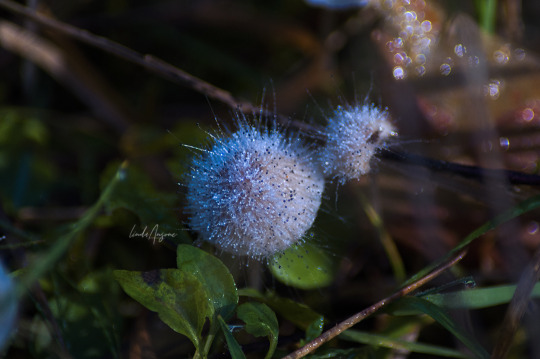
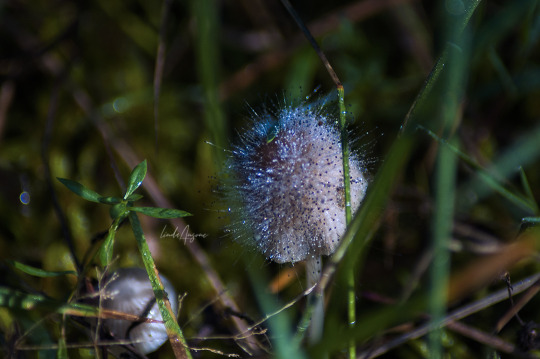
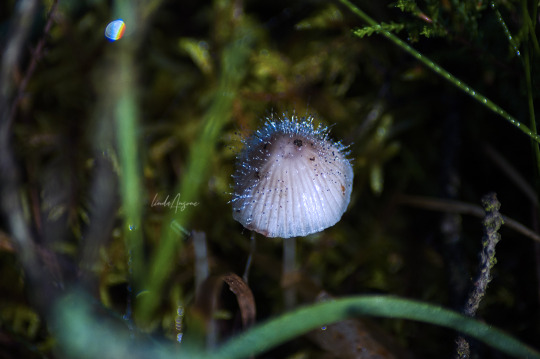
Spinellus fusiger growing on mycena mushrooms.
#mycena#Spinellus fusiger#fungi#mushrooms#mushroom photography#mycology#naturecore#forestcore#forest photography#nature photography#forest floor#nature#original photographers#photographers on tumblr#I've been sick for the last week (still am)#so posting this pretty parasite now seems appropriate
414 notes
·
View notes
Text

Rosy Bonnet fungus (Mycena rosea) growing in moss
Photo by Guy Edwardes
#rosy bonnet#rosy bonnet fungus#mycena#mycena rosea#pink#pink mushrooms#fungi#pink fungi#colorful mushrooms#colorful fungi#mushroom photography#macro photography#nature
173 notes
·
View notes
Text

Mycena polygramma - dapper little mushroom with the pinstripe stipe ^_^
180 notes
·
View notes
Text

Funguary Day 1 - Mycena subcyanocephala
i want to do funguary again since drawing all these little fungyn was super fun!! :D i'm using the official promptlist by @feefal !!
fungyn are semifae creatures in my setting (so, not DND), being magical beings using fungi as mobile bodies. please don't use my designs!! have fun making your own little mushrooms!
#art#fraizer draws#funguary#funguary2024#fungyn#mushroom#semifae#nevverse#mycena#mycena subcyanocephala
91 notes
·
View notes